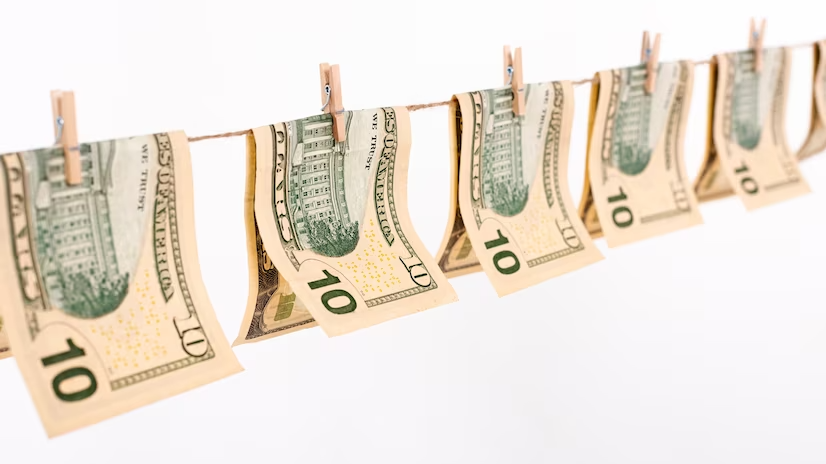Fed's Key Inflation Measure Rises 0.3% In February, Less Than Expected

Inflation, closely monitored by the Federal Reserve, rose slightly less-than-expected in February, giving some hope that higher interest rates are helping to dampen price increases.
The Price Index for Personal Consumption Expenditures, excluding food and energy, rose 0.3% MoM, the Commerce Department said on Friday. This was below the Dow Jones forecast of 0.4% and below the 0.5% rise in January.
On a 12-month basis, core PCE rose 4.6%, slightly below its January level.
Including food and energy, core PCE rose 0.3% m/m and 5% y/y, up from 0.6% and 5.3% in January.
The data came in softer than expected as energy prices fell 0.4% m/m and food prices rose 0.2%. Prices for goods increased by 0.2%, and for services - by 0.3%.
Other data from the report: personal income rose 0.3%, slightly above the 0.2% forecast. Consumer spending increased by 0.2%, compared with the forecast of 0.3%.
Stocks opened higher after the release of the report, while yields on long-term Treasury bonds declined.
"The inflationary trend looks promising for investors. Inflation is likely to be below 4% by the end of the year, which will give the Federal Reserve some leeway to cut rates by the end of the year if the economy enters a recession," said Geoffrey Roach, chief economist LPL Financial.
Market prices on Friday morning after the release of the inflation report indicated that the Fed could raise its base rate by another quarter of a percentage point or leave it unchanged in May.
The Fed's own unofficial forecasts, released last week, indicated that another rate hike is possible this year and no cuts. However, traders are expecting a rate cut this year, with the Fed funds rate expected to end the year at 4.25%-4.5%, half a point below the current target range.
While inflation has eased in some areas, it remains damaging in others. In particular, housing costs have risen sharply. However, Fed officials are turning a blind eye to this growth and expect that rent growth will slow down during the year.
However, inflation is likely to remain well above the Fed's 2% target through 2024, and officials have said they remain focused on lowering prices despite the ongoing banking turmoil.
Data released on Thursday suggests that problems in the banking sector may also be at least under control. Borrowing under the Fed's two emergency lending programs eased slightly last week, suggesting there was no frenzied run for liquidity for banks that could be undercapitalized.
Lesen Sie mehr:
Weltbank: genehmigte eine Finanzierung in Höhe von 350 Millionen US-Dollar für den RISE-II-Einsatz in Pakistan
China hält den Leitzins auf Rekordtiefs stabil.
„Ein glanzloser Januar bis Mai“: Eine Grafik zeigt, was Aktienanleger in einem entscheidenden Wahljahr erwarten können
Mit Bitcoin-Spot-ETF-Zulassungen, Halbierung und bevorstehenden Aufwertungen, was sollten Sie von BTC im Jahr 2024 erwarten?
Polygon Labs kündigt kommende Updates für Produkte und Events an, die im Dezember erwartet werden
Cross-Chain-Protokoll Wormhole sichert sich $225M an Finanzierung und wird nun mit $2,5B bewertet
Vereinigtes Königreich will seinen Sektor für digitale Vermögenswerte stärken
Der Dow Jones hat ein gefürchtetes 'Todeskreuz' gesehen. Das bedeutet Folgendes.
USDT macht im Jahr 2023 80 % aller Kryptotransaktionen in Brasilien aus
US SEC genehmigt den Ethereum-ETF-Antrag von Grayscale
Binance sichert sich neue Euro-Bankpartner zur Wiederaufnahme von Fiat-Transaktionen
Bitcoin ist eine gute Absicherung bei den aktuellen geopolitischen Spannungen, sagt Paul Tudor Jones
Circle interveniert im SEC-Verfahren gegen Binance und verteidigt den regulatorischen Status von Stablecoins
Web3-Startup IYK erhält $16,8 Mio. in neuer Finanzierungsrunde unter Führung von A16z
Bybit stellt den Betrieb in Großbritannien als Reaktion auf die neuen FCA-Regeln ein
Ehemaliger Chief Revenue Officer von Celsius bekennt sich zu strafrechtlichen Vorwürfen und wartet auf seine Verurteilung
US Judge Dismisses Class Action Suit against Uniswap
